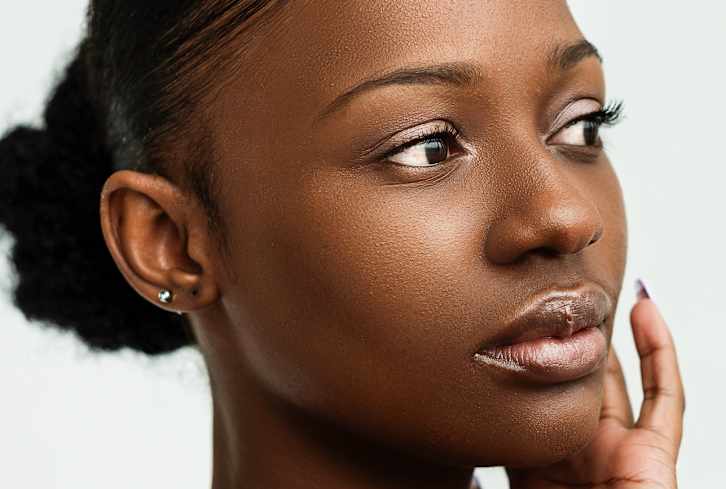Advertisement
3 Ingredients You Shouldn’t Mix With Retinol + 5 You Should


Whether you’re looking to smooth texture, clear acne, ease fine lines, or brighten dark spots, retinol can help. Not every person should use the same retinol formula, however: Some skin types can tolerate high-potency products, while others should opt for gentler ones.
But no matter which retinol you swear by, you should know one thing: Retinol doesn’t play nice with every skin care ingredient out there. Here, we'll highlight a few you should never mix with this active, plus others that make a perfect match.
3 ingredients you shouldn’t mix with retinol
When you mix incompatible ingredients, you run the risk of skin irritation. This could manifest as redness, sensitivity, and even skin barrier damage. To avoid all of that, skip the following ingredients on evenings you use retinol:
- Chemical exfoliants: Most importantly, we have chemical exfoliants. Ingredients like alpha-hydroxy acids and beta-hydroxy acids (AHAs and BHAs) are great additions to your skin care routine overall, but they might trigger a reaction when used with retinol. A few examples include salicylic acid, glycolic acid, lactic acid, and mandelic acid.
- Enzymes: Fruit enzymes are great for gentle exfoliation, but they aren’t the best ingredient to mix with retinol. Any reactions from enzymes mixed with retinol will be less intense than AHAs or BHAs (because enzymes are naturally gentler) but the reaction can still cause irritation.
- Vitamin C: While vitamin C is an expert-loved ingredient for brightening complexion and easing dark spots, you’ll want to use it in the morning and never mix it with retinol. “The two ingredients and their respective formulations can sometimes be very irritating if used together," board-certified dermatologist and YouTube content creator Andrea Suarez, M.D., FAAD, previously told mbg. As a general rule of thumb: Use vitamin C in the morning and retinol in the evening.
5 ingredients you should mix with retinol
One unfavorable side effect of using retinol is the potential for irritation. To ensure your skin reaps all of the benefits of retinol and stays calm and even, find a serum or moisturizer with a few of the following ingredients:
- Hyaluronic acid: This beloved humectant helps pull water into the skin, delivering an instant plumping effect to the skin. You can use HA serums before or after retinol use, but make sure you apply retinol to dry skin (read: after your HA serum has soaked in). Read more about mixing them here.
- Ceramides: Your skin naturally contains ceramides, so it makes sense that applying them topically can increase hydration and nurture a healthy skin barrier. If you really want to go the extra mile, you can ingest ceramides via supplements, too (a few great picks here).
- Shea butter: Shea butter is an excellent emollient, meaning it can soften the skin and fill in microcracks; it's also been shown to seal moisture into the skin and protect the skin barrier1. One study even suggests it has similar topical effects as ceramides2.
- Squalane: If you want to layer an oil over your moisturizer, squalane is a worthy choice. “It is used as an emollient in skin care, which maintains the skin's moisture barrier and hydration," board-certified Rachel Nazarian, M.D.previously told mbg. Be sure to look for squalane, not squalene, as the latter is more occlusive than you likely need for facial use.
- Panthenol: Also known as provitamin B5, panthenol has both anti-inflammatory3 effects and supports wound healing4—hence, why it’s such a friend to retinol, an ingredient that can cause irritation.
The takeaway
Retinol is a powerful ingredient, but it should be used with caution. On the evenings you use retinol, pack your routine with hydrators like hyaluronic acid, ceramides, and shea butter.
Keep chemical exfoliants and vitamin C for other spots in your routine to prevent irritation. Not sure how to space out your retinol use? Consider the skin cycling method—here’s everything you need to know.
4 Sources
- https://www.ncbi.nlm.nih.gov/pmc/articles/PMC5796020/
- https://www.ncbi.nlm.nih.gov/pubmed/26314567
- https://link.springer.com/?utm_medium=affiliate&utm_source=commission_junction&CJEVENT=e59d4dc0def611ed839d584f0a82b836&utm_campaign=CONR_BOOKS_ECOM_GL_PHSS_ALWYS_DEEPLINK&utm_content=textlink&utm_term=PID100064639&?utm_medium=affiliate
- https://link.springer.com/?utm_medium=affiliate&utm_source=commission_junction&CJEVENT=da31674ddef611ed81e400340a82b832&utm_campaign=CONR_BOOKS_ECOM_GL_PHSS_ALWYS_DEEPLINK&utm_content=textlink&utm_term=PID100064639&?utm_medium=affiliate
Watch Next
Enjoy some of our favorite clips from classes
Enjoy some of our favorite clips from classes
What Is Meditation?
Mindfulness/Spirituality | Light Watkins
Box Breathing
Mindfulness/Spirituality | Gwen Dittmar
What Breathwork Can Address
Mindfulness/Spirituality | Gwen Dittmar
The 8 Limbs of Yoga - What is Asana?
Yoga | Caley Alyssa
Two Standing Postures to Open Up Tight Hips
Yoga | Caley Alyssa
How Plants Can Optimize Athletic Performance
Nutrition | Rich Roll
What to Eat Before a Workout
Nutrition | Rich Roll
How Ayurveda Helps Us Navigate Modern Life
Nutrition | Sahara Rose
Messages About Love & Relationships
Love & Relationships | Esther Perel
Love Languages
Love & Relationships | Esther Perel
What Is Meditation?
Box Breathing
What Breathwork Can Address
The 8 Limbs of Yoga - What is Asana?
Two Standing Postures to Open Up Tight Hips
How Plants Can Optimize Athletic Performance
What to Eat Before a Workout
How Ayurveda Helps Us Navigate Modern Life
Messages About Love & Relationships
Love Languages
Advertisement

We Need To Talk About Toxic Femininity In Beauty: Ever Encounter These Examples?
Perpetua Neo, DClinPsy

We Need To Talk About Toxic Femininity In Beauty: Ever Encounter These Examples?
Perpetua Neo, DClinPsy

We Need To Talk About Toxic Femininity In Beauty: Ever Encounter These Examples?
Perpetua Neo, DClinPsy

We Need To Talk About Toxic Femininity In Beauty: Ever Encounter These Examples?
Perpetua Neo, DClinPsy
















